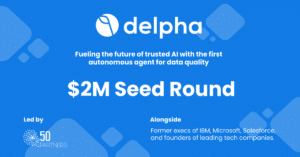
Choosing between a single or multiple Salesforce organizations (orgs) profoundly influences data management, analytics capability, and strategic agility across enterprises. This decision shapes how an organization captures, integrates, analyzes, and leverages its data resources. Below, we explore the distinct advantages and challenges of both approaches from a data perspective, including real-world examples and detailed considerations on AI and cost management.
What Are Salesforce Orgs?
A Salesforce org is an individual instance of Salesforce, holding data, metadata, and configurations specific to an organization. Enterprises may choose either a single org or multiple orgs based on their operational requirements, regulatory needs, or strategic goals (Salesforce, 2024).

Single Salesforce Org
Advantages
Unified Data Landscape
A single Salesforce org provides a centralized environment, ensuring consistent definitions, streamlined governance, and standardized processes across the organization. This unified approach enhances data reliability and simplifies management (McKinsey & Company, 2021).
Comprehensive Customer View
Consolidating data into a single org enables a complete and unified view of customers, allowing all departments to access consistent information. This holistic perspective facilitates collaboration and informed strategic decisions (Harvard Business Review, 2016).
Efficient Analytics and Reporting
A unified data environment enhances analytical capabilities, enabling comprehensive, accurate reports without complex integration processes. Data insights become immediately actionable across the organization (Boston Consulting Group, 2021).
Streamlined Data Management
Administration tasks such as data entry, updates, integration, and customization occur once, significantly reducing operational complexity and associated costs (IDC, 2021).
Challenges
Scalability Concerns
As data volumes grow, performance might degrade, requiring advanced scaling strategies to maintain responsiveness (Salesforce, 2021).
Complex Governance Requirements
Balancing distinct departmental needs and governance structures within a centralized data environment can become challenging, particularly in diverse multinational corporations (Harvard Business Review, 2016).
Multiple Salesforce Orgs
Advantages
Customized Data Management
Multiple orgs offer flexibility in tailoring data management to specific departmental or regional requirements, potentially improving compliance with local regulations and standards (IDC, 2021).
Risk Isolation
Separating data into distinct orgs isolates risks, limiting the scope of breaches or data quality issues to a single org without impacting others (Boston Consulting Group, 2021).
Enhanced Compliance Management
Organizations with diverse regulatory obligations find managing compliance easier with clearly delineated responsibilities and controls across separate orgs (IDC, 2021).
Challenges
Data Fragmentation and Silos
Multiple Salesforce orgs create isolated data environments, resulting in fragmented information. This fragmentation hampers cross-functional collaboration, comprehensive analytics, and strategic planning (Harvard Business Review, 2016).
Redundant Operational Efforts
Each Salesforce org necessitates separate administrative processes, customization, and integrations, significantly increasing complexity, resource requirements, and operational costs (Boston Consulting Group, 2021).
Complexity in Data Integration
Integrating and managing unified data across multiple Salesforce orgs requires substantial technical expertise. Issues such as duplicate management, data synchronization, and conflict resolution add further operational burdens (IDC, 2021).
Limited Analytics and AI Potential
Fragmentation restricts the effectiveness of analytics and AI, which rely heavily on comprehensive, unified datasets. Isolated data limits the accuracy and strategic value of predictive analytics and automated processes (MIT Sloan Management Review, 2021).
Case Studies: Real-World Transitions from Multiple to Single Orgs
Many large enterprises have recognized these challenges and shifted from multiple orgs to a single org:
• Global Consumer Goods Company: After consolidating from five orgs to one, they reported a 40% reduction in administrative costs, significantly improved customer insights, and streamlined compliance management (Salesforce Customer Success, 2020).
• Financial Services Firm: Transitioning from multiple orgs enabled the firm to enhance regulatory compliance and substantially improve the accuracy of AI-driven predictive analytics used for customer acquisition and retention (IBM Case Study, 2021).
AI and Data Integration in Salesforce: How Org Structure Matters
AI and machine learning thrive on unified, consistent data sets. In single-org environments, AI-driven technologies such as predictive analytics, customer segmentation, and automation achieve significantly better performance due to comprehensive, high-quality data availability (McKinsey & Company, 2021). Conversely, multiple org structures require complex integrations, often resulting in fragmented data that restricts AI’s predictive accuracy and automation capabilities (MIT Sloan Management Review, 2021).

Conclusion
From a data perspective, adopting a single Salesforce org offers substantial advantages by simplifying data management, significantly reducing operational costs related to data maintenance and enrichment, and fully leveraging the potential of AI. The consistent industry trend toward consolidating multiple orgs into single orgs underscores these benefits. Organizations moving toward a unified data environment report enhanced AI effectiveness, greater operational efficiencies, and stronger strategic positioning (Gartner, 2021). Therefore, a single Salesforce org strategy is strongly recommended to maximize data-driven business potential.






